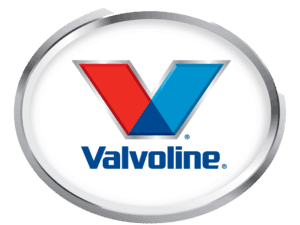Common Problems With The Ford V10 Triton Engine. Since its introduction in 1991, Ford’s V10 6.8 litre (413 cubic inch) engine has been a staple in the company’s “Modular” engine family. This powerhouse is commonly found in F53 motorhome chassis (‘A’ class) and E450 chassis (‘C’ class) vehicles. Despite its longevity and continued use today, the Triton V10 has faced several issues over the years that RV owners should be aware of.
Understanding the Ford V10 Triton Engine
Before delving into the problems, it’s essential to understand the unique design of this engine. The V10 can be thought of as a 4.0 litre V6 engine with four extra cylinders or a 5.4 litre V8 with two additional cylinders. This concept isn’t new; it was used in the motorcycle industry decades ago. For instance, Italian manufacturer Benelli took a four-cylinder Honda 500cc engine and added two cylinders to create a 750cc straight-6 engine in the late 1970s.
The Spark Plug Dilemma
One of the most notorious issues with early V10 engines (1999 – 2005) is the tendency for spark plugs to blow out of the cylinder head. This problem stems from a combination of design choices:
- Material Mismatch: Ford uses a cast iron engine block with an overhead cam aluminium cylinder head design.
- Central Spark Plug Placement: The engine employs centrally mounted spark plugs and waste spark ignition.
- Thread Weakness: The aluminium cylinder heads on the two-valve-per-cylinder engines, built in Ford’s Windsor, Ontario plant, have a critical flaw in the spark plug threads.
The root of the problem lies in the inherent weakness of the soft aluminium used for the cylinder heads. Additionally, aluminium expands at a different rate compared to the steel spark plugs threaded into it, exacerbating the issue over time.
Ford’s design places the V10 spark plug at the bottom of a 5-inch deep well, allowing for only about four threads worth of spark plug engagement in the cylinder head. This limited thread engagement, combined with the material properties mentioned earlier, sets the stage for potential failure.
The Consequences of Design Flaws
After repeated heat cycling, the spark plug can effectively weld itself to the threads, weakening the surrounding material. The end result of this design flaw is twofold:
- Ejection: The rear-most spark plugs can shoot out of the cylinder head while driving.
- Removal Difficulty: Spark plugs may get stuck when trying to remove them for routine maintenance.
When hard steel sticks to soft aluminium, the aluminium typically gives way first. This interaction can cause the cylinder head’s spark plug threads to strip clean out, leaving a small hole and no way to re-install a new spark plug securely. Importantly, this failure can occur not only during normal operation but also when removing spark plugs for routine renewal.
Identifying Spark Plug Issues in Ford V10 Triton Engines
To help RV owners identify potential spark plug problems before they become catastrophic, here are some common symptoms to watch for:
- Misfiring Engine: If your engine is misfiring, especially at higher RPMs, it could indicate a loose spark plug.
- Loss of Power: Sudden power loss while driving might suggest a blown-out spark plug.
- Unusual Noises: A hissing or popping sound from the engine bay could indicate a spark plug that’s not properly seated.
- Check Engine Light: While this can indicate many issues, a illuminated check engine light combined with the above symptoms may point to spark plug problems.
Preventative Measures and Solutions
While the spark plug issue is serious, there are steps RV owners can take to mitigate the risk:
- Regular Inspections: Frequently check spark plug tightness, especially before long trips.
- Proper Torque: Always use a torque wrench when installing new spark plugs, following Ford’s specifications precisely.
- Frequent Changes: Consider changing spark plugs more often than recommended, especially in high-mileage engines.
- Upgrade Options: For 2004 and newer engines, Ford offers revised spark plugs with a larger thread diameter. Consider this upgrade if applicable to your engine.
Long-Term Solutions and Engine Modifications
For those looking for more permanent solutions, several aftermarket options exist:
- Thread Inserts: Some repair shops offer services to install thread inserts, providing a more robust connection for spark plugs.
- Cylinder Head Replacement: In severe cases, replacing the cylinder heads with updated designs may be necessary.
- Engine Swap: Some RV owners have opted to replace the V10 with a more reliable engine, though this is a significant undertaking.
Other Common Ford V10 Triton Engine Problems
While the spark plug issue is the most well-known, other problems can affect the V10 Triton engine:
- Exhaust Manifold Bolts: These bolts can break due to heat cycling, leading to exhaust leaks.
- Fuel Economy: The V10, being a large displacement engine, is known for poor fuel economy, especially in heavy RVs.
- Oil Consumption: Some owners report higher than normal oil consumption, particularly in high-mileage engines.
Conclusion
The Ford V10 Triton engine, despite its issues, has powered countless RVs across America. By understanding its quirks and potential problems, RV owners can take proactive steps to ensure their engines remain reliable for years to come. Regular maintenance, early problem detection, and appropriate upgrades when necessary are key to getting the most out of this powerful engine.
For more detailed information or professional assistance with your Ford V10 Triton engine, please contact LAS Motorhomes at 01604 861999. Our experienced technicians can provide expert advice and services tailored to your RV’s specific needs.




